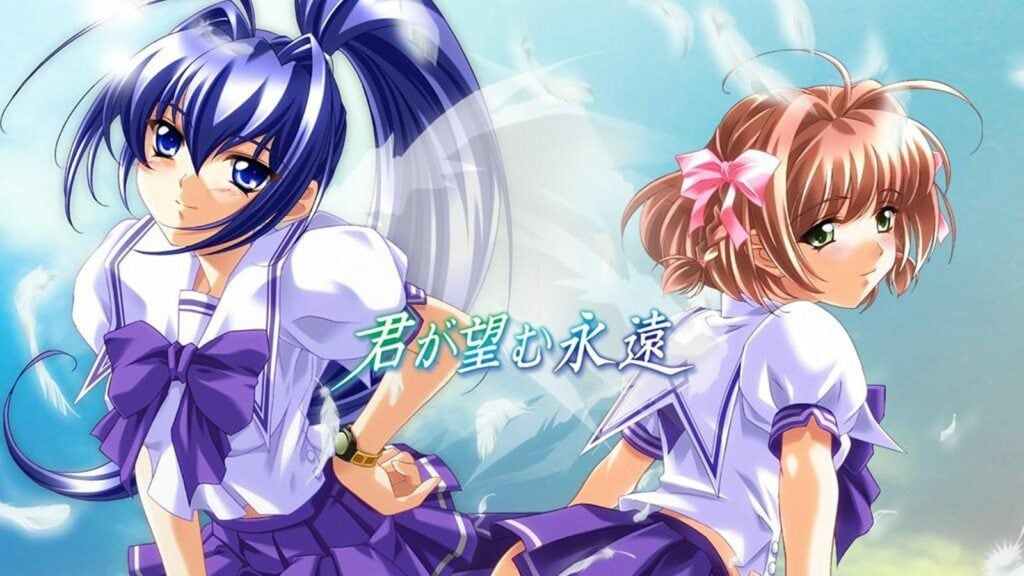Updated on April 9, 1:59 p.m. (GMT+8): Improved relevancy.
“Ba-baka! It’s not like I like you or anything!”
Even if you’ve just delved into the world of anime, you might have heard these exact words—or something along these lines—uttered by a cute waifu or husbando in a series. If that triggers something deep within yourself, don’t worry: you’re not alone.

You have fallen for a tsundere, and it might be good to take a deep dive into one of the most popular character archetypes for a better understanding of your situation.
What is tsundere?

Tsundere is a portmanteau of two separate attributes: tsun tsun and dere dere.
Tsun tsun means to turn away in disgust or anger, while dere dere is to be affectionate. Essentially, to be a tsundere is to be hot and cold at seemingly disparate times, in ways that make sense to the character but possibly not to the viewers.
It’s both a noun and an adjective. A person can be a tsundere, or can be described as being tsundere.

It’s generally used as a meta-descriptor for fictional characters, rather than as an attribute a character might say about another character. If they do so, it’s usually in service of comedy or lampshading.
Whether it’s because of their history, upbringing, or personality, tsundere are characters who the viewers can see clearly cares about the object of their disgust/affection—but tries their best to conceal it by pretending to be rude, uncaring, or even borderline abusive.

GET YOURS TODAY: Good Smile Toradora!: Taiga Aisaka Nendoroid Action Figure |
They might show a hint of a blush, the stealing of glances, and the doki doki of their beating hearts—which all disappear promptly at the drop of a hat.
It could be because they don’t want their crush to know about their true feelings, or refuse to exhibit any sign of it to anyone but themselves. Many such characters also go into a state of denial, although their feelings are obvious to any observer.
Where did the term tsundere come from?

While the term has been a mainstay in the anime fandom for decades, it was reportedly first coined by players discussing a character on a forum.
Junichi Togashi from the Department of Japanese Literature at Daito Bunka University traced the origin of the term “tsundere” in a paper, translated thanks to Tofugu, to a comment about the adult visual novel Rumbling Hearts.

One user described how much he loved interacting with a love interest, Ayu Daikuuji, saying that “tsun tsun dere dere is good” in August 2002.
It was shortened to “tsundere” months later when talking about Haruhi Sakuma in another visual novel, Cosmos no Sora Ni, and became a popular buzzword in the online dating sim community.
Why is tsundere so effective?
Science, of course.
In a study conducted by Elliot Aronson and Darwyn Linder, published in the Journal of Experimental Social Psychology in May 1965, the scientists posited that interpersonal attractiveness could be enhanced through a “gain-loss” process.

The experiment’s test subjects first interacted with a confederate—a person covertly part of the experiment. Then, they were allowed to eavesdrop on a conversation between the confederate and a researcher.
The confederate would describe the subject in four different ways—highly positive, highly negative, going from positive to negative, or going from negative to positive.

In the abstract, the experiment found that “subjects liked the confederate best when her evaluations moved from negative to positive and least when her evaluations moved from positive to negative.”
The rollercoaster of emotions is real—and even more thrilling when it veers wildly. It’s why people love redemption stories, like that of Marvel Cinematic Universe’s Loki, and why betrayals and side-switchers like Berserk’s Griffith stick out more than a villain who’s been evil from the beginning.
Who’s a tsundere?

Whether we like it or not, tsunderes have become one of the most common character archetypes, especially for characters in romantic comedies.
In a will-they-won’t-they situation, tsunderes are the perfect characters for stalling out a series, as well as for introducing conflicts that create drama and tension.
Though there are many different kinds of tsunderes along the hot-and-cold spectrum, they are generally still capable of normal relationships with other people, only transforming into this personality when interacting with a love interest.

GET YOURS TODAY: Evangelion Production Model-02, Bandai Spirits Real Grade |
Most tsunderes grow more dere as the timeline progresses, and a tsundere’s journey is usually complete when they can dive into their dere side with no embarrassment or awkwardness.
This personality type is more common to women, but there are plenty of guys in anime (and wider fiction) that exhibit the same traits, even through their blood pumping manliness.
The tsun to dere scale is large enough that there are several characters that feel unique rather than tropey. Famous tsunderes include:
- Asuka Langley (Neon Genesis Evangelion)
- Rin Tohsaka (Fate series)
- Taiga Aisaka (Toradora!)
- Kurisu Makise (Steins;Gate)
- Mikoto Misaka (A Certain Magical Index)
- Kallen Stadtfeld (Code Geass)
- Inuyasha (Inuyasha)
- Haruhi Suzumiya (Haruhi Suzumiya series)
- Vegeta (Dragon Ball)
- Kyou Sohma (Fruits Basket)
- Naru Narusegawa (Love Hina)

GET YOURS TODAY: Inuyasha Funko Pop! figure |
Just a heads up, some of the links on ONE Esports are affiliate links. This means if you click on them and make a purchase, we may earn a small commission at no additional cost to you. It’s a way for us to keep the site running and provide you with valuable content. Thanks for your support!
READ MORE: G2 Esports player starts heated anime debate on Fullmetal Alchemist: Brotherhood


